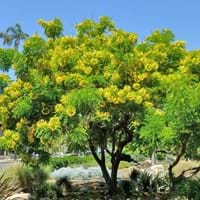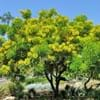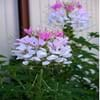Life Span
Perennial
Perennial
Type
Flowering Plants, Tree
Vegetable
Origin
Brazil
World/Pandemic, North America, Europe, Russia/Siberia, Northern Africa, Asia, India
Types
Not Available
Not Available
Number of Varieties
Not Available
Habitat
Not Available
Cropland, Farms, gardens
USDA Hardiness Zone
Not Available
Not Available
AHS Heat Zone
Not Available
Not Available
Sunset Zone
Not Available
A1, A2, A3, H1, H2, 1a, 1b, 2a, 2b, 3a, 3b, 4, 5, 6, 7, 8, 9, 10, 11, 12, 13, 14, 15, 16, 17, 18, 19, 20, 21, 22, 23, 24
Habit
Upright/Erect
Upright/Erect
Flower Color
Yellow
White, Yellow green
Flower Color Modifier
Bicolor
Bicolor
Fruit Color
Not Available, White
Not Available
Leaf Color in Spring
Dark Green
Not Available
Leaf Color in Summer
Dark Green
Green, Gray Green
Leaf Color in Fall
Dark Green
Green, Gray Green, Yellow green
Leaf Color in Winter
Dark Green
Not Available
Leaf Shape
Pinnate
Linear
Plant Season
Spring, Summer, Fall
Not Available
Sunlight
Partial shade, Full Shade
Full Sun, Partial Sun
Type of Soil
Loam
Loam, Sand
The pH of Soil
Acidic, Neutral, Alkaline
Neutral
Soil Drainage
Well drained
Well drained
Bloom Time
Indeterminate, Summer
Late Spring, Early Summer
Tolerances
Drought
Drought
Where to Plant?
Ground
Ground, Pot
How to Plant?
Seedlings, Stem Planting
Seedlings, Sets
Plant Maintenance
Medium
Medium
Watering Requirements
Requires regular watering
Keep the ground moist but not water-logged, Requires a lot of watering, Water twice a day in the initial period
In Summer
Lots of watering
Lots of watering
In Spring
Moderate
Moderate
In Winter
Average Water
Average Water
Soil pH
Acidic, Neutral, Alkaline
Neutral
Soil Type
Loam
Loam, Sand
Soil Drainage Capacity
Well drained
Well drained
Sun Exposure
Partial shade, Full Shade
Full Sun, Partial Sun
Pruning
Requires very little pruning
Remove damaged leaves, Remove dead branches, Remove dead leaves
Fertilizers
All-Purpose Liquid Fertilizer
All-Purpose Liquid Fertilizer
Pests and Diseases
Red blotch, Thripes
Red blotch
Plant Tolerance
Drought
Drought
Flower Petal Number
Single
Single
Fragrant Bark/Stem
No
Yes
Foliage Texture
Bold
Medium
Foliage Sheen
Matte
Matte
Attracts
Not Available
Not Available
Allergy
Not Available
no allergic reactions
Aesthetic Uses
Showy Purposes
Not Used For Aesthetic Purpose
Beauty Benefits
Not Available
Not Available
Environmental Uses
Air purification
Air purification
Medicinal Uses
No Medicinal Use
Asthma, Bronchitis, cholesterol-lowering, Cough, Diabetes, Digestion problems, Diuretic, High blood pressure
Part of Plant Used
Whole plant
Whole plant
Other Uses
Used as Ornamental plant
Culinary use
Used As Indoor Plant
No
Yes
Used As Outdoor Plant
Yes
Yes
Garden Design
Shady Tree, Showy Tree
Edible, Herb / Vegetable
Botanical Name
Cassia leptophylla
ALLIUM cepa 'Burgundy'
Common Name
gold medallion tree
Garden Onion, Red Onion
In Hindi
gold medallion tree
लाल प्याज
In German
gold medallion tree
Rote Zwiebel
In French
gold medallion tree
Oignon rouge
In Spanish
árbol medallón de oro
Cebolla roja
In Greek
χρυσό δέντρο μετάλλιο
Κόκκινο κρεμμύδι
In Portuguese
árvore medalhão de ouro
Cebola vermelha
In Polish
Drzewo Medalion złota
Czerwona cebula
In Latin
aureus arbore
Red Cepa
Phylum
Magnoliophyta
Magnoliophyta
Class
Magnoliopsida
Liliopsida
Family
Fabaceae
Liliaceae
Clade
Angiosperms, Eudicots, Rosids
Angiosperms, Monocots
Tribe
Not Available
Not Available
Subfamily
Not Available
Allioideae
Number of Species
Not Available
Not Available
Difference Between Cassia Leptophylla and Red Onion
If you are confused whether Cassia Leptophylla or Red Onion are same, here are some features about those plants to help you choose better. Many people think that these two plants have the same characteristics, but one can see Cassia Leptophylla and Red Onion Information and learn more about it. Fertilizers required for proper growth of Cassia Leptophylla are All-Purpose Liquid Fertilizer, whereas for Red Onion fertilizers required are All-Purpose Liquid Fertilizer. Hence, one should know the basic difference between Cassia Leptophylla and Red Onion if you are planning to have them in your garden to enhance its beauty.
<
Flowering PlantsImportance of Cassia Leptophylla and Red Onion
Want to have the most appropriate plant for your garden? You might want to know the importance of Cassia Leptophylla and Red Onion. Basically, these two plants vary in many aspects. Compare Cassia Leptophylla and Red Onion as they differ in many characteristics such as their life, care, benefits, facts, etc. Every gardener must at least have the slightest clue about the plants he wants to plant in his garden. Compare their benefits, which differ in many ways like facts and uses. The medicinal use of Cassia Leptophylla is No Medicinal Use whereas of Red Onion is Asthma, Bronchitis, cholesterol-lowering, Cough, Diabetes, Digestion problems, Diuretic and High blood pressure. Cassia Leptophylla has beauty benefits as follows: Not Available while Red Onion has beauty benefits as follows: Not Available.
Compare Facts of Cassia Leptophylla vs Red Onion
How to choose the best garden plant for your garden depending upon its facts? Here garden plant comparison will help you to solve this query. Compare the facts of Cassia Leptophylla vs Red Onion and know which one to choose. As garden plants have benefits and other uses, allergy is also a major drawback of plants for some people. Allergic reactions of Cassia Leptophylla are Not Available whereas of Red Onion have no allergic reactions respectively. Having a fruit bearing plant in your garden can be a plus point of your garden. Cassia Leptophylla has no showy fruits and Red Onion has no showy fruits. Also Cassia Leptophylla is flowering and Red Onion is not flowering . You can compare Cassia Leptophylla and Red Onion facts and facts of other plants too.





